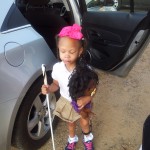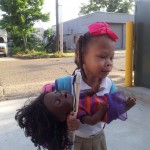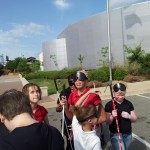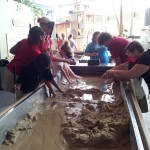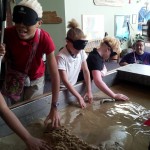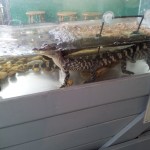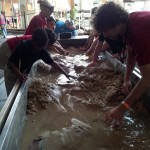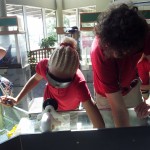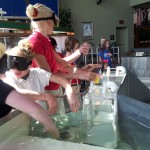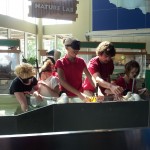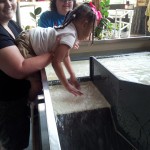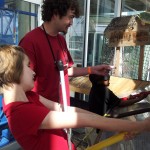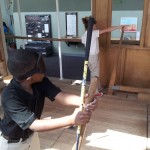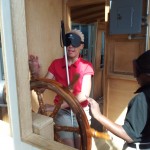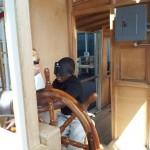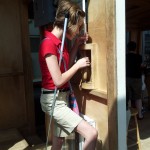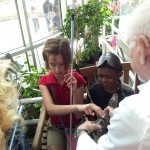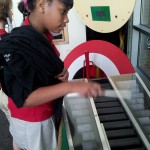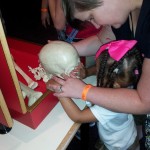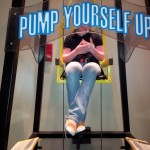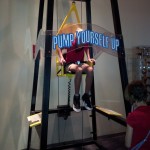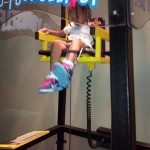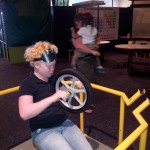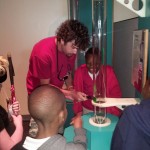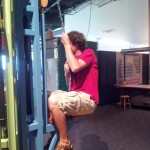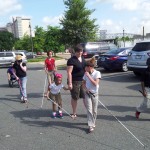

Latest posts by Corbb O'Connor (see all)
- New research: Proposed, global standard for quiet cars won’t benefit average blind person - June 30, 2015
- Learning to Type with a Simple ‘Keystroke’ - October 28, 2014
- Unique Certification Organization Recognized with $20,000 Award - July 29, 2014
- Help Blind People Combat the Tendency to Rock Back and Forth - July 16, 2014
- Routine Class Project Changes First Grader’s Mind - June 12, 2014
Science museums for kids are some of the best places for blind and low vision students, for nearly everything is tactile, virtually unbreakable, and inclusive for everyone.
Sheena Manuel, NCLB, who provides outreach services on behalf of the Institute on Blindness, recently took her students (and those of Krystal Guillory, NCLB, another Lincoln Parish teacher of blind students) to Sci-Port, Louisiana’s Science Center.
“From my perspective, we wanted the kids to get out and experience other things outside of Ruston,” Manuel said. “We had one student who had never heard of a trolley, and another who was afraid of animals of any kind.”
The National Center for Blind Youth in Science is sponsoring a program called STEM2U. The nation-wide program will bring accessible STEM learning opportunities to ninety blind and low vision children in elementary and high school from across the United States. Furthermore, NFB STEM2U will offer learning opportunities to parents of blind children and educators working with blind students. For more details, visit the NCBYS web site.
In addition to learning how Louisiana’s system of locks—which help boats transition among waterways of varying heights—students also learned about the laws of motion, operated steamboat levers, petrified wood, thermodynamics, and even pet baby alligators!
“For one student, who is terrified of animals, to even go near the alligator was something we didn’t expect,” Manuel said. “But she did, and the next day, she wasn’t as afraid anymore.”
More than learning about science, though, the goal is more about teaching the kids to be comfortable having conversations with their peer groups about what may otherwise be a very visual reference.
“When the kids talk about an alligator, our blind students now have a reference point to know that an alligator has scales, is long and lives in fresh water.”
We’ve assembled some photos of the event for you below. Click the picture to enlarge it, and explore the gallery with the “previous” and “next” buttons.


Latest posts by Corbb O'Connor (see all)
- New research: Proposed, global standard for quiet cars won’t benefit average blind person - June 30, 2015
- Learning to Type with a Simple ‘Keystroke’ - October 28, 2014
- Unique Certification Organization Recognized with $20,000 Award - July 29, 2014
- Help Blind People Combat the Tendency to Rock Back and Forth - July 16, 2014
- Routine Class Project Changes First Grader’s Mind - June 12, 2014
